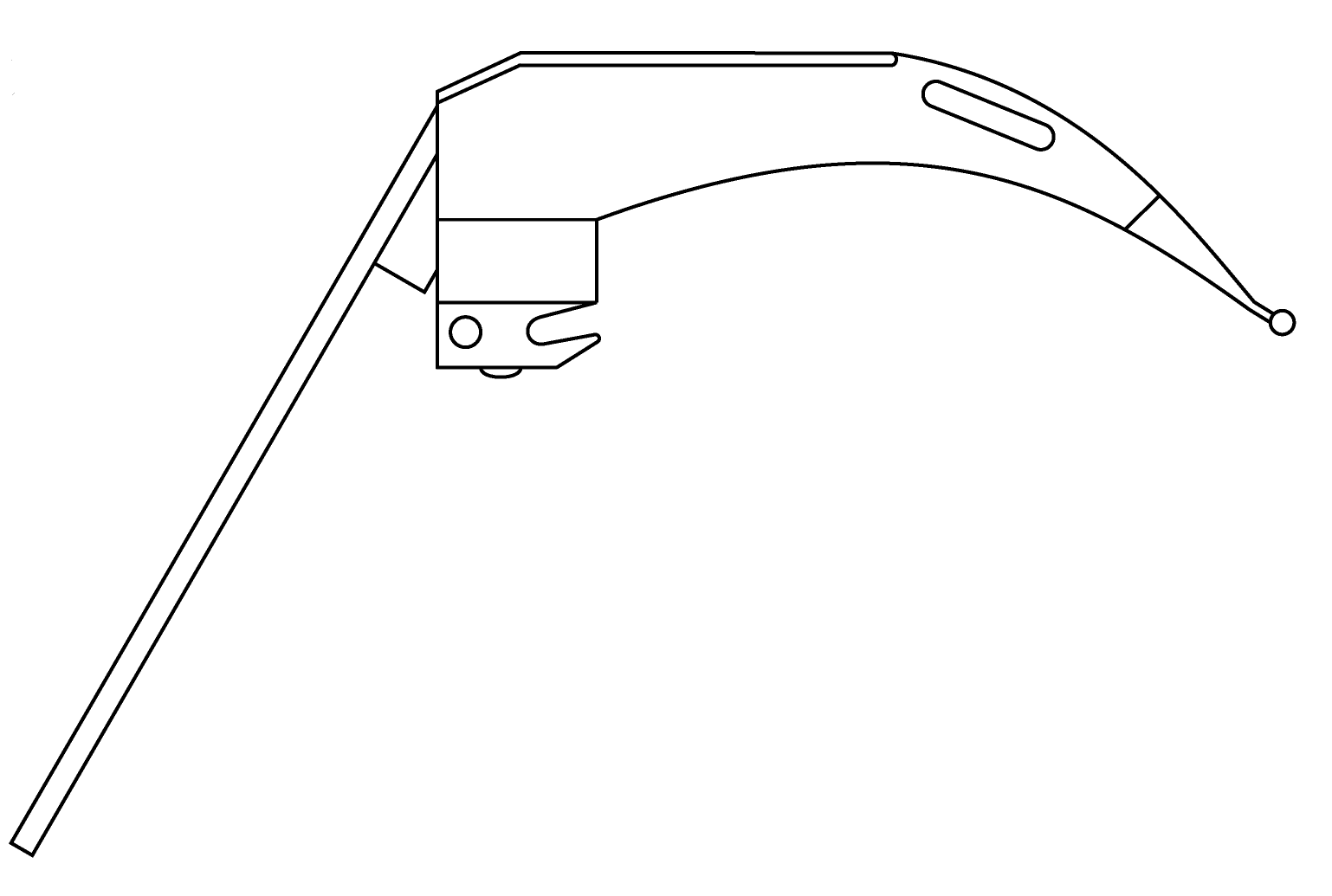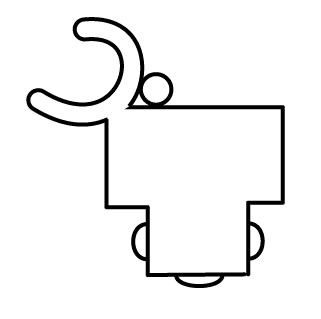Time: 0 second
Question No. 2
Q: How can you classify laryngoscopes?
Answer No. 2
Direct Laryngoscopes
- Straight Blade
- Curved Blade
Indirect Laryngoscopes
- Rigid Blade
- Integrated channel laryngoscopes
- Video Stylet
Question No. 3
Q: What is the difference between straight and curved laryngoscope blades?
Answer No. 3
Type
Description
Advantages & Disadvantages
Curved Blade
Designed to be placed under the epiglottis and lift it directly to provide a view of the laryngeal opening
- More traumatic
- More stimulating due to contact with epiglottis - can trigger tachycardia and arrythmias
- Provides better view in patients with long, floppy or anterior epiglottis (neonates, infants and children)
Straight Blade
Designed to lift the epiglottis indirectly and provide a view of the laryngeal opening by placing the tip over the epiglottis into the vallecula and exerting pressure on the hypoepiglottic ligament
- Less traumatic
- Less stimulating
- Provides better view in patients with big tongues
Question No. 4
Q: What type of laryngoscope blade is this?

Answer No. 4
Macintosh blade
Question No. 6
Q: What are the components of the laryngoscope blade that you can identify and describe?

Answer No. 6
Spatula
(Tongue)
(Tongue)
- The main part of the blade which may be straight or curved
- Passes over the lingual surface of the tongue
Flange
- The portion of the blade that arises from the edge of the spatula
- Used to direct and compress the tongue and other tissue to reveal the cords
- Size and shape varies significantly with different blade designs
Web
- Connects the flange to the spatula
Tip
(Beak)
(Beak)
- Contacts the vallecula to directly or indirectly elevate the epiglottis
- Is usually blunt and thickened to prevent trauma
Base
- Attaches the blade to the handle
- Has a notch to engage with the hinge pin of the handle
Question No. 7
Q: What type of laryngoscope blade is this?

Answer No. 7
Miller blade
Question No. 9
Q: Which type of patients is this commonly used on and why?
Answer No. 9
- Commonly used in neonates, infants and children
- Provides better view in patients with long, floppy or anterior epiglottis
Question No. 10
Q: What type of laryngoscope blade is this?

Answer No. 10
McCoy blade
Question No. 11
Q: What is different about the McCoy blade? When/why do we use it?
Answer No. 11
- A modification of a Macintosh blade
- Has a hinged tip which can be lifted using the lever attached to the handle
- Designed to lift the epiglottis with less force than a standard mackintosh
- Can be useful in achieving a better view than a standard Macintosh blade particularly in cervical spine injury
Question No. 12
Q: What types of light source can be used with laryngoscopes? What are their features?
Answer No. 12
Standard Light Source
(Colour Coded Black)
(Colour Coded Black)
- Contains a small bulb near the distal end of each blade
- Handle contains the batteries only
- Bulbs can be standard filament or LED
- Filament bulbs can cast small central shadow
- Bulbs generate heat and risk of thermal transmission to patient with standard bulbs (not with LEDs
Fibreoptic Light Source
(Colour Coded Green)
(Colour Coded Green)
- Contains the bulb and batteries in the handle
- Transmitted to the blade through a fibreoptic column
- Avoids the risk of heat transmission
- Can allow for brighter bulbs to be used
- Disposable blades more economical
Question No. 13
Q: What are the infection control concerns with laryngoscopes?
Answer No. 13
- Well recognised source of cross-contamination:
- High-risk instruments, regularly contaminated with blood
- Have been implicated as possible transmitters of CJD
- Both the handle and blade can become contaminated during use
Question No. 14
Q: How can infection concerns be overcome?
Answer No. 14
- Single-use laryngoscope blades are encouraged:
- Not been shown to be associated with an increased risk of complications
- Use can be economical when sterilisation costs considered
- If reusable laryngoscopes are used:
- Blades should be sterilised by a regulated sterile supply department between uses
- Handles should be disinfected or sterilised between uses
- If video laryngoscopes are used:
- Single-use blades are encouraged
- Decontamination of reusable components must happen after each use in a standardised manner
- Care should be taken to place used scopes in a designated receptacle after use to prevent contamination




